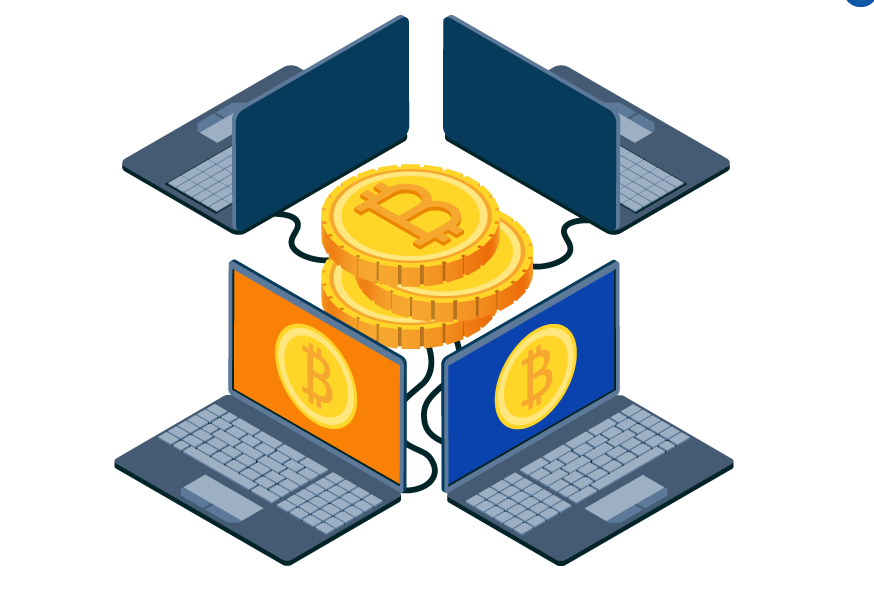
When Bitcoin was initially proposed in a 2008 whitepaper by Satoshi Nakamoto, some of the biggest concerns around the cryptocurrency involved whether it could scale up to the necessary size to provide a real alternative to fiat currency. These days, that’s still an incredibly serious problem for the cryptocurrency as it can process just seven transactions every second. In 2009, when Bitcoin was just getting off the ground, that was enough. These days, though, that creates some serious problems. There are continual sending and receiving traffic jams, and so transactions can take some time to process, and the fees involved with processing them are becoming increasingly ridiculous. As much as people want it to become THE alternative to fiat currency, this slow down means it has trouble competing. After all, a network like Visa can handle 50,000 transactions every single second. How can Bitcoin even hope to compete with numbers like those?
This problem hasn’t escaped the notice of the Bitcoin network community. There have been hundreds of proposals over the past decades to deal with the problem involved, but no real agreement has been reached. As a result of that lack of agreement, many networks imitating Bitcoin have branched out, creating several forks, which creates problems in and of itself. One solution, though, might just hold the answer to this serious problem – the Lightning Network.
Creating a Shorter Path

What is the Bitcoin Lightning Network? The heart of the Bitcoin Lightning Network is creating a shorter route for some Bitcoin network transactions. These days, there are hundreds of people involved in every single transaction on Bitcoin. If you could speed that up, say by just involving a few people, you might have a simplified version of what you hope to achieve.
Here’s a quick example that may help put this idea in perspective. Imagine the telephone game some people play in groups. You whisper a message to one person, then send it, one by one, across a whole group. What if you could whisper a message to a single person and that was the end of the game? It would significantly shorten the process. That’s exactly what the Lightning Network hopes to achieve.
The idea behind this proposal is that instead of recording every single transaction on the blockchain, the Lightning Network would add another layer to the blockchain. Users could create a payment channel between two parties on the added layer. Ideally, the channel would exist as long as it needed two, and the transactions could happen in a matter of seconds without the ridiculous fees.
Right now, if you want to send someone a Bitcoin, it’s one more transaction on the blockchain. If the same person sends you two Bitcoin for services rendered, it’s another transaction. Say you suddenly owe the same individual yet another Bitcoin. Again, another transaction recorded on the blockchain.
Wondering exactly how a system like the Lightning Network might improve the transactions involved? Imagine you do quite a bit of work for an ecommerce storefront. You also buy a fair bit of product from them, so the store owner is continually sending you Bitcoin and you’re continually sending him Bitcoin. If the Lightning Network existed, you two would create a multisignature wallet (one that you could both get to with your private keys). You’d both deposit something into the wallet. Then you can perform as many transactions as you like in that wallet. If you need to send a Bitcoin to the store owner, you transfer those ownership rights. If he owes you two Bitcoin for the coding you did last month, he transfers that ownership to you. To create the updated balance, you use your private keys. Once the business relationship ends between the two of you, you close the channel, and the balance sheet is what goes into the blockchain. Essentially, the two of you could do a hundred transactions on that private channel, but the final balance is all that is actually recorded on the blockchain as a single transaction. It’s a much simpler way of sending and receiving Bitcoin without the number of blocks involved in today’s transactions.
The potential here is enormous. If the technology to create the Bitcoin Lightning Network were widely adopted, you would be able to send a payment (or get one) instantly with those you’re already connected with even without creating a dedicated channel because the system would do it for you.
Benefits and Drawbacks

There are some real pros to this system. You could literally buy a cup of coffee instantly with this option and never pay any fees for that Bitcoin transaction. There are also some real drawbacks, though, because there’s no security behind it. Instead, you could only really use it for the smallest transactions. Much bigger ones would have to take place on the original layer. However, because that original layer is less likely to be clogged with small transactions, even those bigger ones could take place relatively quickly.
The Lightning Network might even make another dream come true – you could transfer Bitcoin to another cryptocurrency through that network without the use of expensive cryptocurrency exchanges.
More than that, though, it solves the primary problem facing the Bitcoin network right now – the time involved in a transaction. The speed at which transactions are completed is the primary benefit of the Lightning Network. You will no longer have to wait for confirmation after confirmation. Instead, it would be like handing someone physical cash. The estimates currently suggest that one million transactions per second are possible should the Bitcoin Lightning Network succeed in its efforts, a number that would outstrip traditional currencies.
There are a few other benefits some haven’t considered. Lacking transaction fees is one. Everything takes place outside of the blockchain, so paying any serious fees would be almost ridiculous if the Lightning Network comes to be. Added anonymity is another potential benefit. Because the transactions happen outside the blockchain, they would be very difficult to trace, which is a real plus in many situations.
For as many benefits as there are, there are still some drawbacks. The first is the most obvious – it’s not operational at this point. You don’t know how good it actually is. Right now, there are just some suggestions of how good it could be. While the cookies might smell amazing in the oven, you don’t actually know if they will be edible until you pull them out. Many things could happen during development. Given that this is a web of channels, it could happen that payments take convoluted routes, resulting in added time and transaction fees.
One additional concern is that right now, the channels involved all have a maximum amount of funds involved. The biggest concern about the Lightning Network, though, is that too many hubs will form – spaces where a lot of capital is processed, and that means the network will be more centralised than it ever was before.
Where Did This Idea Come From?

Wondering where something like a Bitcoin Lightning Network was even proposed? A whitepaper authored by Joseph Poon and Thaddeus Dryja in 2015 suggested the idea. Today, there are three different startups working on the idea: Blockstream, Lightning Labs, and ACINQ. Members of the Bitcoin network community also often chime in with all three startups. Working in three different programming languages, it’s hard to tell exactly who might win, but tests have proven they can all work with each other, so they could all co-exist should this idea ever take off.
Are There Other Scalability Ideas?

There are many other scalability ideas out there. The Bitcoin Cash vs. Lightning Network debate is one of the fiercest debates online today, and Bitcoin Cash has some very solid backing principles. They have decided the answer to scalability is larger block sizes, as large as 8 MB at creation (that number has since grown to 32 MB). Given that Bitcoin only allows 2 MB, this would significantly speed up the overall process. Since both of these ideas remain in development, though, it’s hard to tell which will win at the end of the road. It’s even possible other amazing ideas will be presented in the next few years to help address the problem of scalability.
Using the Lightning Network

Wondering when will Lighting Network activate on Bitcoin? You’re not alone, but it’s important to note that the network is still very young. There’s not software where users outside of the development teams can make transactions, and the implementations have real problems at the moment. While real Bitcoin has been sent and received using all three start-ups ideas, there’s work to be done. Fortunately, the work necessary to support the systems is already in place. Lightning specifications have been published to help create a set of rules around the networks, and developers in other cryptocurrencies are working to echo the Lightning Network to get it off the ground almost everywhere.
The key to success will be extensive testing. After all, you wouldn’t want to use a network that wasn’t completely safe and easy to use, so it could still be a few years before it’s released. It certainly solves the scalability issue if it is released, though, and should it be able to interact with other cryptocurrencies, decentralised exchanges may be more possible than anyone ever realised. It really is an idea that makes Bitcoin seem like something everyone might consider adopting.
If you’re not part of the teams involved with the startups, you can’t yet access the Lightning Network. All you can do at this point is keep your finger on the pulse of the news and see if it turns out to live up to the excitement surrounding the proposal. It’s possible, though, that another scaling proposal will take over. The Bitcoin Cash vs. Lightning Network debate is heating up, and it’s possible the Lightning Network will be simply an idea someone once had. So, what is the Bitcoin Lightning Network – it’s hope. It’s a hope that something to handle the scalability problem will be achieved soon enough to make Bitcoin a real alternative to fiat currency in many parts of the world.